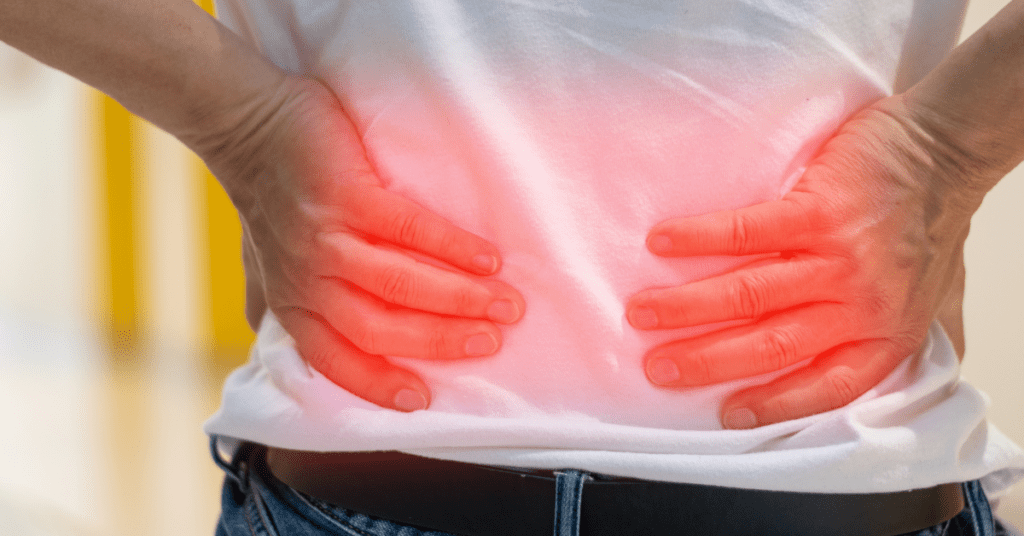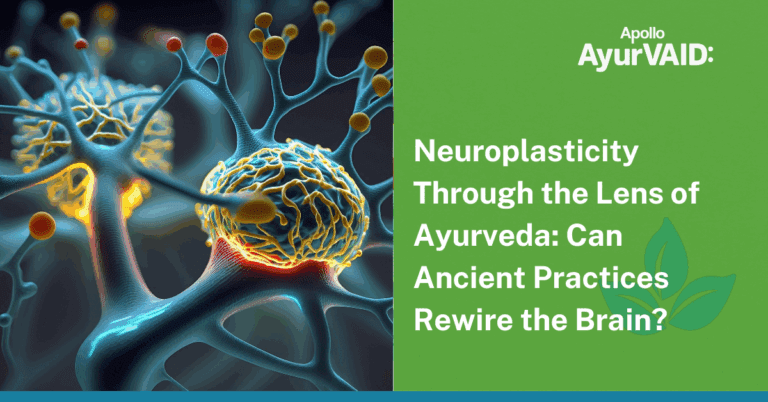Lumbar spinal stenosis is a narrowing of the spinal canal in the lower part of your back. Stenosis, which means narrowing, can cause pressure on your spinal cord or the nerves that go from your spinal cord to your muscles. Spinal stenosis can happen in any part of your spine but is most common in the lower back. Spinal stenosis and subsequent compression of the spinal cord and nerves often lead to debilitating pain, numbness, and weakness. While conventional treatments focus on symptom management, Ayurveda offers a holistic approach that aims to address the underlying causes of the condition and promote overall well-being.

Spinal Stenosis and Ayurveda
Ayurveda literature suggests that Grudhrasi, or Katigata Vata, shares symptoms with spinal stenosis, a condition caused by an imbalance in the Vata dosha, which affects movement and nervous system functions. This imbalance can be triggered by factors like aging, degenerative changes, poor posture, and a sedentary lifestyle. The patient experiences maximum pain in one direction, aggravated by prolonged standing or lumbar extension. Ayurvedic interventions aim to restore functions, strengthen the spine, and alleviate symptoms through natural remedies, therapies, and lifestyle modifications

Ayurveda Treatments for Spinal Stenosis
- Herbal Remedies: Ayurveda harnesses the power of various herbs and herbal formulations to reduce inflammation, alleviate pain, and enhance spinal health. Prominent herbs used in the treatment of spinal stenosis include Ashwagandha, Guggulu, Shallaki, and Dashmool. These botanicals possess potent anti-inflammatory, analgesic, and rejuvenating properties, which aid in symptom management and overall spinal well-being, and should be taken as advised by your Ayurveda doctor for a personalized dose and duration.
- Panchakarma Therapy: Panchakarma therapies focus on detoxification and rejuvenation which can be beneficial for spinal stenosis. Procedures such as Abhyanga (therapeutic massage), Bashpa Swedana (herbal steam therapy), and Basti (medicated enema) help reduce pain, improve flexibility, and strengthen the spine. These therapies also facilitate the elimination of toxins, promoting overall healing.
- Yoga and Exercise: Yoga asanas (poses) and exercises play a pivotal role in managing spinal stenosis. Gentle stretching and strengthening exercises enhance flexibility, alleviate pain, and provide support to the spine. Yoga poses such as Bhujangasana (Cobra Pose), Setu Bandhasana (Bridge Pose), and Marjariasana (Cat-Cow Pose) are particularly beneficial in relieving symptoms and promoting spinal health.
- Diet and Lifestyle: Ayurveda emphasizes the significance of a balanced diet and a healthy lifestyle in managing spinal stenosis. Consumption of anti-inflammatory foods, including fresh fruits, vegetables, whole grains, and healthy fats, aids in reducing inflammation and supporting spinal health. Additionally, maintaining proper posture, avoiding prolonged periods of sitting or standing, and incorporating stress management techniques like meditation and pranayama contribute to overall well-being.
Can Ayurveda help in treating Spinal Stenosis, Slipped Discs, and Damaged Spinal Nerves effectively?
Ayurveda and Panchakarma therapies, such as Abhyanga and Basti, are crucial for reducing pain, inflammation, and healing in slipped discs. These therapies aim to strengthen the spine, improve flexibility, and alleviate compression. Ayurveda treatments include herbal remedies, Panchakarma therapies, and specific yoga asanas. Herbal formulations like Ashwagandha and Dashmool reduce inflammation, while Panchakarma therapies like Abhyanga and Basti improve nerve function. Specific yoga asanas and exercises support spine health. Ayurveda offers relief from pain, reduces inflammation, and improves overall spinal health. However, personalized treatment is recommended. By embracing Ayurveda principles, individuals can embark on a natural and holistic path towards healing and well-being.
References:
- Ratha, Kshirod & DHAR, BARIK & Hazra, Jayram. (2016). MANAGEMENT OF A CASE OF LUMBAR STENOSIS WITH AYURVEDIC INTERVENTION. Asian J Pharm Clin Res. 9. 1-3.
- Priyanka Diliprao Khiradkar. Ayurvedic management of Spinal canal Stenosis:A single case study. J. res. tradit. med. 2021; 7(2, Jul- Dec 2021): 63-67. doi:10.5455/jrtm.2021/83118






